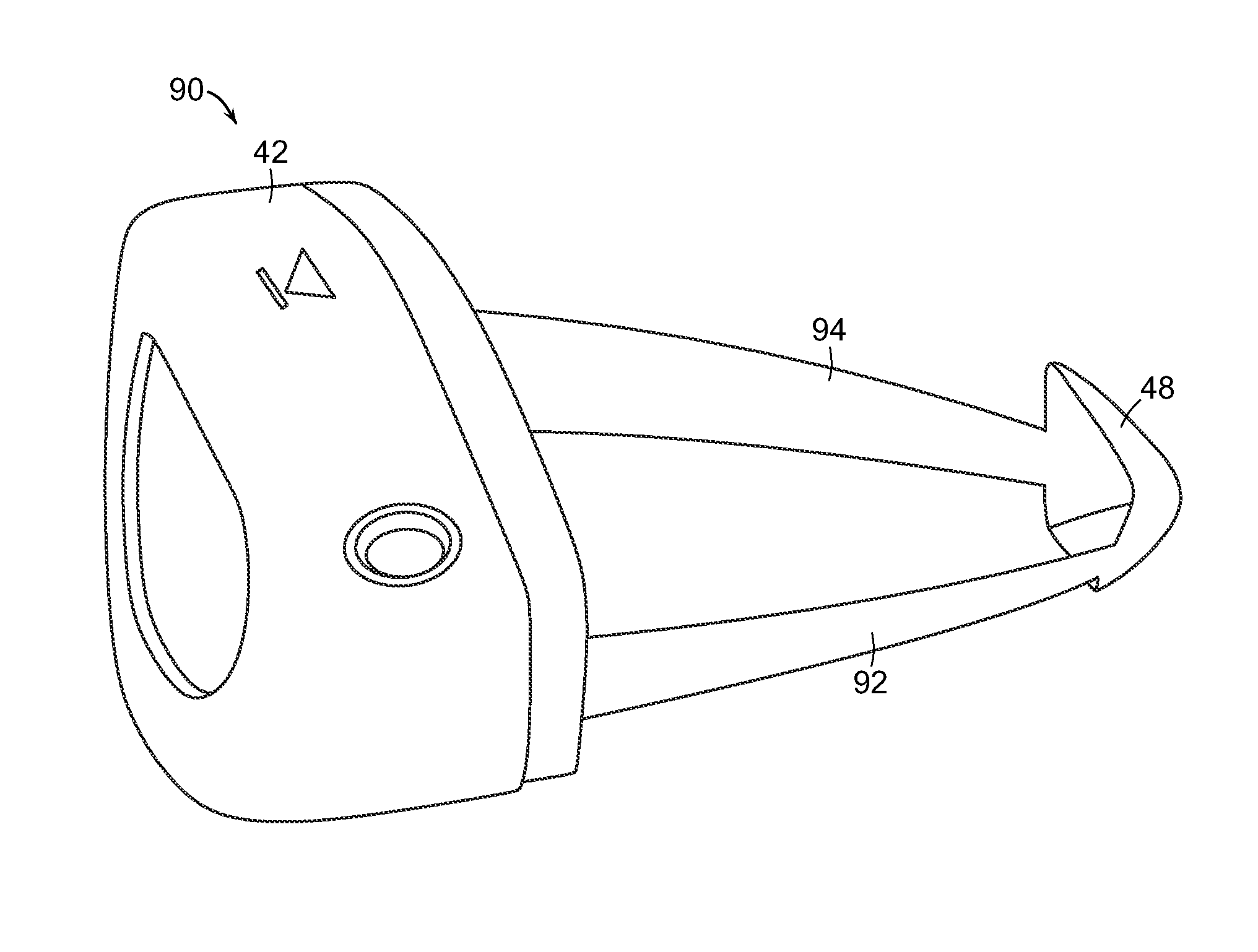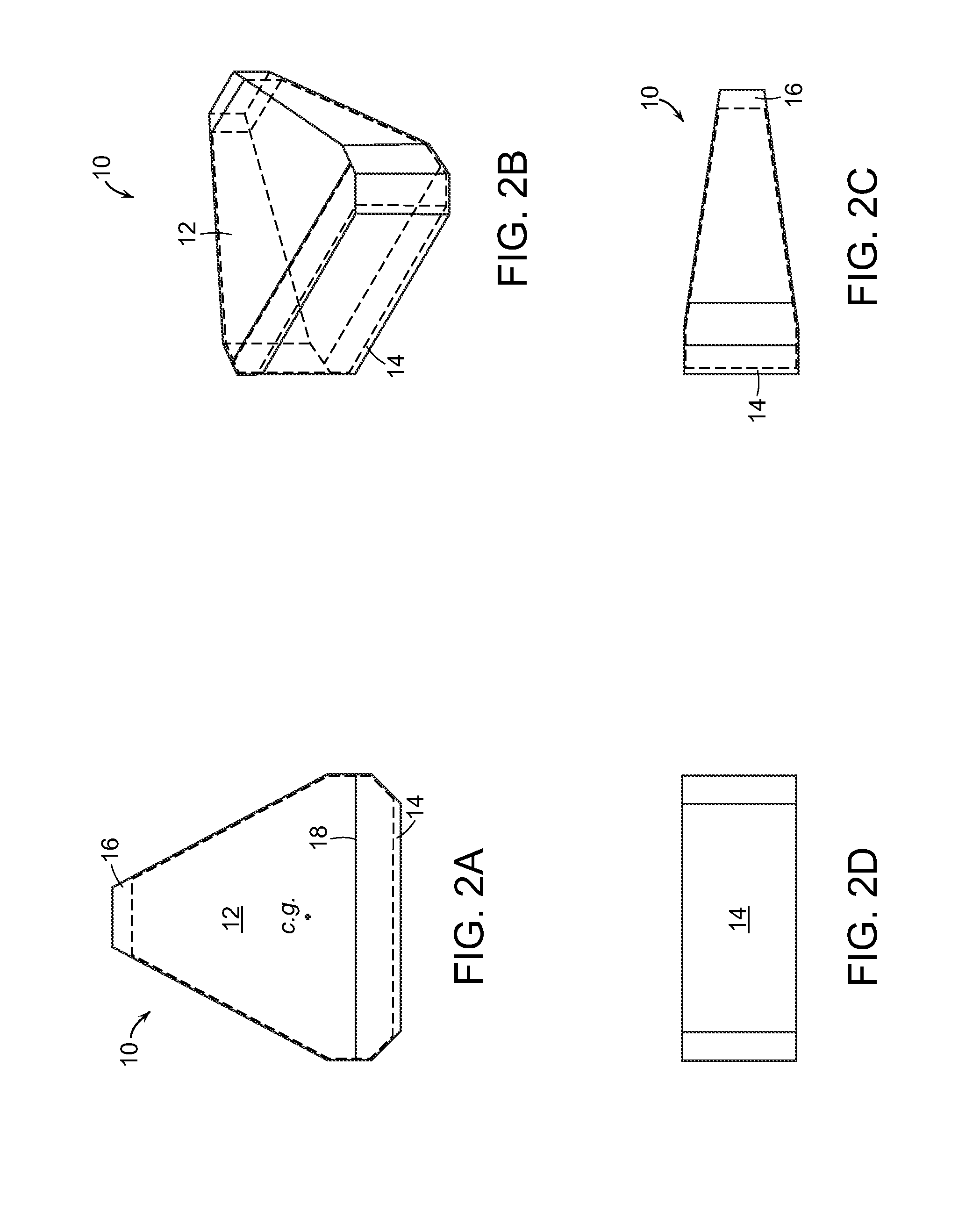Metal wood club with improved moment of inertia
a technology of inertia and metal wood, which is applied in the field of improved metal wood or driver golf clubs, can solve the problems of lack of suitable drive or metal wood clubs, substantially square shape of driver clubs, and environmental effects that are beyond the control of golf equipment designers, and achieves the effects of improving the rotational moment of inertia and the location of the center of gravity
- Summary
- Abstract
- Description
- Claims
- Application Information
AI Technical Summary
Benefits of technology
Problems solved by technology
Method used
Image
Examples
Embodiment Construction
[0026]Rotational moment of inertia (“MOI” or “Inertia”) in golf clubs is well known in the art, and is fully discussed in many references, including U.S. Pat. No. 4,420,156, which is incorporated herein by reference in its entirety. When the inertia is too low, the club head tends to rotate excessively from off-center hits. Higher inertia indicates higher rotational mass and less rotation from off-center hits, thereby allowing off-center hits to fly farther and closer to the intended path. Inertia can be measured about a vertical axis going through the center of gravity of the club head (Iyy), and about a horizontal axis through the center of gravity (c.g.) of the club head (Ixx), as shown in FIG. 1. The tendency of the club head to rotate around the vertical y-axis through the c.g. indicates the amount of rotation that an off-center hit away from the y-axis causes. Similarly, the tendency of the club head to rotate around the horizontal x-axis through the c.g. indicates the amount ...
PUM
 Login to View More
Login to View More Abstract
Description
Claims
Application Information
 Login to View More
Login to View More - R&D
- Intellectual Property
- Life Sciences
- Materials
- Tech Scout
- Unparalleled Data Quality
- Higher Quality Content
- 60% Fewer Hallucinations
Browse by: Latest US Patents, China's latest patents, Technical Efficacy Thesaurus, Application Domain, Technology Topic, Popular Technical Reports.
© 2025 PatSnap. All rights reserved.Legal|Privacy policy|Modern Slavery Act Transparency Statement|Sitemap|About US| Contact US: help@patsnap.com



